If you've ever been captivated by the clean, profound flavors of Japanese food, you've already had a taste of washoku. This isn't just a style of cooking; it's a culinary philosophy centered on balance, seasonality, and a deep respect for ingredients. At its core, Japanese cooking is about letting the natural, beautiful flavors of high-quality food shine, rather than covering them up with heavy, complicated sauces.
Your Journey into Japanese Cooking Begins Here
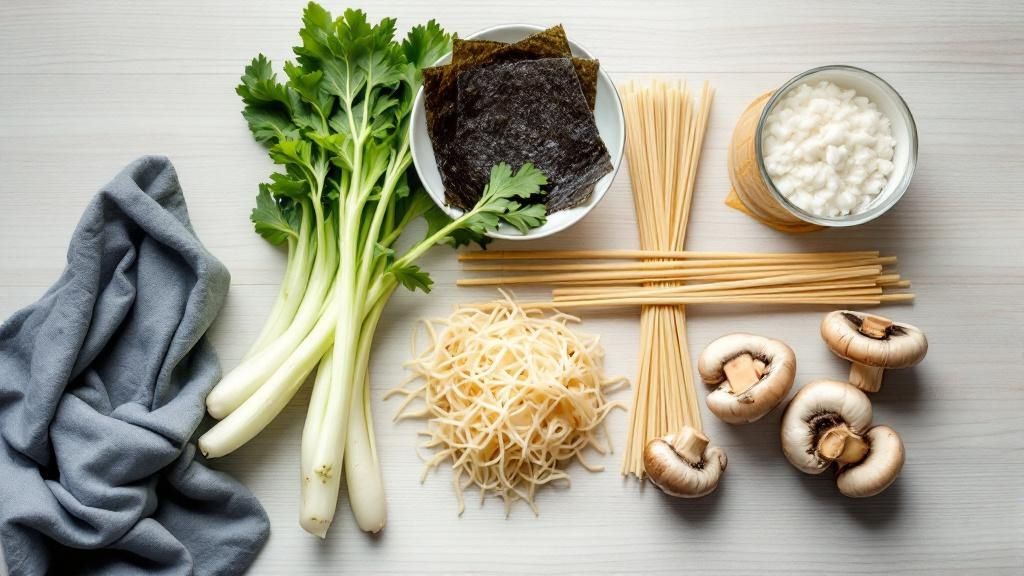
Ready to bring the art of Japanese cuisine into your own kitchen? This guide is here to pull back the curtain on the core principles that make Japanese food so incredibly special. We'll walk you through the foundational ideas that unlock a world of delicious possibilities. This isn't about memorizing complex recipes; it's about getting a feel for a few key concepts that will build your confidence from the ground up.
Soon enough, you'll be creating authentic flavor profiles built around umami—that savory, deeply satisfying "fifth taste" that is the soul of so many beloved dishes. It’s that craveable, mouth-watering quality you find in things like soy sauce, miso, and dashi.
The Philosophy of Simplicity
One of the first things you'll notice is that Japanese cooking truly celebrates the idea that less is more. Instead of a spice rack crowded with a dozen jars, a dish might depend on the perfect harmony of just three or four stellar ingredients. Think about it: a perfectly ripe, summer tomato needs little more than a pinch of sea salt to be breathtaking. That's the same principle at play here.
The goal isn't to force an ingredient to become something it's not. It's to elevate what is already there. This mindset is a beautiful way to honor the natural world and the gifts of each season.
The Key Pillars of Japanese Cuisine
This entire approach stands on a few simple but powerful pillars. Once you start to recognize them, you'll see them everywhere, giving you a reliable map for your culinary adventures.
- Balance: Every meal strives for a harmony of flavors (sweet, salty, sour, bitter, and umami), a variety of colors, and a mix of cooking methods.
- Seasonality: This is non-negotiable. Using ingredients when they are at their absolute peak of freshness is essential for achieving the best taste and texture.
- Presentation: Food should be a feast for the eyes before it even reaches the palate. Careful thought is given to the arrangement of food and the choice of dishware.
When you start to embrace these basics, you’re doing more than just learning a few recipes—you're adopting a whole new way of thinking about food. Consider this your starting line for a truly rewarding journey.
Building Your Essential Japanese Pantry

Every incredible Japanese dish you've ever loved starts not with a complex, ten-page recipe, but with a well-stocked pantry. Think of it like an artist's palette; with the right core colors, you can mix and create a masterpiece. These staples are the true building blocks of flavor you'll find yourself reaching for over and over again.
These Japanese cooking basics are what give the cuisine its soul, emphasizing balance, simplicity, and umami. The timeless appeal of these core ingredients is so powerful that traditional Japanese cuisine is expected to capture a massive 54.97% market share in the Japanese restaurant world by 2025. You can get a deeper look into the business side of Japanese food over at databridgemarketresearch.com.
This guide will walk you through the five essentials that will form the backbone of your new cooking adventures. Let's get started.
The Five Pillars of Your Pantry
Jumping into Japanese cooking doesn’t mean you need to buy out the entire international aisle. Far from it. The key is to start with high-quality versions of a few incredibly versatile ingredients. These five items are the workhorses that deliver the signature salty, sweet, sour, and savory flavors that make Japanese food so distinct and delicious.
To get you started, here's a quick reference guide to the core ingredients you'll want to have on hand. Think of this as your initial shopping list for building a foundation of authentic flavor.
Essential Japanese Pantry Staples
| Ingredient | Primary Use | What to Look For |
|---|---|---|
| Japanese Short-Grain Rice | The heart of every meal | Brands like Koshihikari or Akitakomachi for their sticky, slightly sweet texture. |
| Soy Sauce (Shoyu) | All-purpose seasoning, marinades, dipping | A quality, all-purpose koikuchi shoyu offers a complex, brewed flavor. |
| Miso Paste | Soup bases, glazes, marinades | Start with a versatile white miso (shiromiso) or a richer red miso (akamiso). |
| Rice Vinegar | Sushi rice, dressings, pickles | Look for a mild, slightly sweet profile that brightens dishes without overpowering them. |
| Dashi | The foundational broth for soups and stews | Instant granules are convenient, or make it from scratch with kombu and katsuobushi. |
With just these five staples, you've unlocked the potential to create a huge range of classic Japanese dishes right in your own kitchen. Let's take a closer look at each one.
A Deeper Look at the Essentials
-
Japanese Short-Grain Rice: This is more than just a side dish; it's the heart of the meal. Unlike the fluffy, separate grains of long-grain rice, Japanese rice is celebrated for its sticky, tender, and slightly sweet character. This quality makes it perfect for shaping into onigiri or just savoring in a simple bowl.
-
Soy Sauce (Shoyu): Forget thinking of this as just a salty liquid. Real Japanese soy sauce is a brewed and fermented condiment with a remarkably complex, rounded flavor. It's used for everything from seasoning and marinating to being the star of a dipping sauce. A good, all-purpose koikuchi shoyu is the perfect place to start.
-
Miso Paste: Made from fermented soybeans, miso is the secret behind that soul-warming bowl of soup. But its talents don't stop there—it's fantastic in marinades for fish or as a glaze for vegetables. For those keeping an eye on their sodium, you can still elevate your dishes with low-sodium miso paste without sacrificing flavor.
-
Rice Vinegar: With a much milder and sweeter personality than Western vinegars, Japanese rice vinegar adds a gentle, clean acidity that makes flavors pop. It's absolutely essential for seasoning sushi rice and creating light, refreshing salad dressings.
-
Dashi: This is the foundational stock of Japanese cooking, the equivalent of chicken or vegetable broth in Western kitchens. It provides a deep, savory umami flavor to just about everything, from noodle soups to simmered dishes. You can easily make it from scratch with kombu (kelp) and katsuobushi (dried bonito flakes) or use convenient instant dashi granules for a quick flavor boost.
Think of dashi as the invisible flavor backbone. You might not always be able to pick it out directly, but its presence adds a profound depth and savoriness. Take it away, and you'd immediately notice something was missing. It's the secret to making your home cooking taste authentically Japanese.
When you head to the store, remember that quality really does matter. You don’t need the most expensive bottle on the shelf, but a good brand of soy sauce or a reliable bag of rice will make a world of difference in your final dish. Start here, and you'll be well on your way to exploring the delicious world of Japanese home cooking.
Mastering Fundamental Cooking Techniques
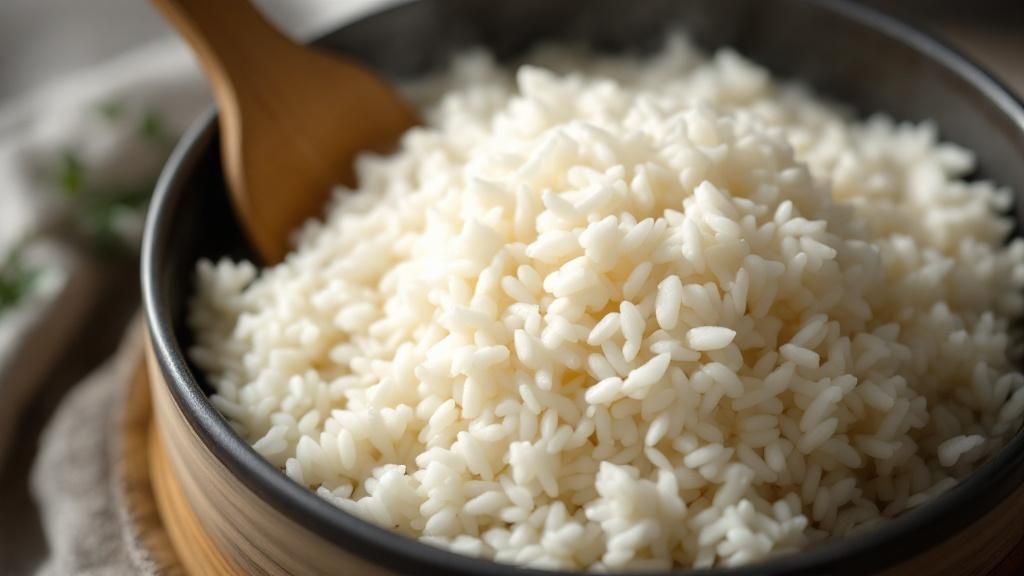
In the world of Japanese cooking, the ingredients are always the stars of the show. The techniques? They're the talented directors, making sure every ingredient gives its most brilliant performance. These methods, perfected over centuries, are all about one thing: preserving and enhancing the natural flavor and texture of food. Think of it less as forceful cooking and more as a gentle, guiding hand.
Getting a feel for these core methods is one of the most rewarding parts of learning japanese cooking basics. Each one unlocks a whole new world of flavor and texture, from the smoky char of a grill to the delicate tenderness of steamed fish. Let's walk through five of these foundational techniques that form the very backbone of countless Japanese meals.
Yaku: The Art of Grilling
Yaku (焼く) is the Japanese approach to grilling, broiling, and pan-frying. It’s all about using dry heat to create that irresistible savory crust while keeping the inside perfectly moist and tender. This single technique is behind some of the most iconic dishes you can think of.
Picture smoky yakitori skewers, with chicken grilled over hot coals until it’s perfectly browned. Or imagine a beautiful fillet of salted mackerel (shioyaki) with skin so crispy it glistens. The real skill in yaku is mastering the heat to get that perfect balance between char and tenderness.
Niru: The Gentle Simmer
At the heart of Japanese comfort food, you’ll find niru (煮る). This is the technique of gently simmering ingredients in a flavorful broth, usually a mix of dashi, soy sauce, and mirin. It’s nothing like a harsh, rolling boil; a slow simmer lets the ingredients soak up all that wonderful flavor without falling apart.
This is the magic behind cozy dishes like nitsuke (simmered fish) and nikujaga, a heartwarming beef and potato stew. The food becomes incredibly tender and saturated with a deep, savory umami that feels both complex and wonderfully comforting.
Musu: The Purity of Steaming
Steaming, known as musu (蒸す), is cherished for its ability to cook food so gently that it holds onto its natural moisture, nutrients, and delicate flavors. It's a clean, pure method that lets the ingredient itself do all the talking.
By cooking with steam, you avoid adding extra fats or oils, which allows the true essence of the food to shine. This makes it a perfect technique for delicate seafood, vegetables, and savory custards.
A classic example is chawanmushi, a silky, savory egg custard steamed in a cup, often with little treasures like shrimp or mushrooms hidden inside. Steaming is the secret to its unbelievably smooth texture and subtle, elegant taste. This same gentle touch is key when preparing sweets served with tea; you can learn more by reading Your Guide to Japanese Tea Types, as many are steamed to perfection.
Ageru: The Crispy Deep Fry
Ageru (揚げる) is the technique of deep-frying, but not as you might know it. Japanese frying is an art form focused on creating an incredibly light, crispy, and non-greasy coating that elevates whatever is inside.
- Tempura: Vegetables and seafood get a dip in a light, ice-cold batter before being fried quickly. The result is a feather-light, crispy shell that shatters when you bite into it.
- Karaage: For this, chicken is first marinated in soy sauce, ginger, and garlic, then coated in starch and deep-fried twice for an unbelievably crispy and juicy bite.
The real secret to incredible ageru is precise temperature control. It's what ensures the food cooks through perfectly without ever becoming heavy or oily.
Nama: The Celebration of Raw
Finally, we have nama (生), which simply means preparing and serving food raw. This is perhaps the ultimate sign of respect for an ingredient, because there is absolutely nothing to hide behind. It demands the freshest, highest-quality fish and seafood you can possibly find.
Of course, this technique is most famous in the worlds of sushi and sashimi. Here, the skill isn't in the cooking but in the knife work—the precise, clean cuts that are designed to perfectly showcase the unique texture and flavor of the fish. It’s a beautiful testament to the Japanese culinary philosophy of pure, elegant simplicity.
Here's the rewritten section, crafted to sound like an experienced human expert and match the provided blog post examples.
The Essential Tools for a Japanese Kitchen
You don't need a kitchen overflowing with expensive, single-use gadgets to start cooking Japanese food at home. In fact, you’ll find that a philosophy of simplicity is at the heart of the Japanese kitchen, and that definitely extends to your tools. A few key, well-chosen utensils will make all the difference, turning tasks that seem complex into simple, repeatable motions.
Think of it this way: a skilled artist only needs a few quality brushes, and a home cook really only needs a handful of reliable tools. Getting the hang of Japanese cooking basics is so much easier when you have the right equipment ready to go. Let's walk through the absolute essentials that will serve you well for years to come.
Your Core Kitchen Toolkit
Everything really starts with a great knife. If you’re going to invest in one thing, make it a high-quality Japanese chef's knife. A versatile Gyuto or a multi-purpose Santoku is your best friend in the kitchen. These knives are designed to be lightweight with a thin, incredibly sharp blade, making them perfect for the precise slicing you’ll need for everything from vegetables to fish.
Next up is a reliable rice cooker, or suihanki. While you can absolutely cook rice on the stovetop, a dedicated cooker guarantees perfectly fluffy, sticky rice every single time with zero guesswork. There's a reason it's a true workhorse in any Japanese household.
A great rice cooker isn't a luxury; it's a tool for consistency. It frees you up to focus on the other components of the meal, knowing the cornerstone of your dish will be perfect.
Here are a few other indispensable items that will make your cooking process feel much more seamless:
- Fine-Mesh Strainer: This is non-negotiable for creating clear, beautiful dashi. It efficiently strains out the kombu and katsuobushi flakes, leaving you with that pure, flavorful broth that forms the base of so many incredible dishes.
- Cooking Chopsticks (Saibashi): You’ll notice these are longer and sturdier than the chopsticks you eat with. Saibashi are unbelievably versatile. You'll use them for stirring sauces, flipping delicate items like gyoza in a pan, and even artfully arranging food on a plate.
Starting with just these four essentials equips your kitchen with a powerful and practical foundation. These are the tools you will reach for again and again, empowering you to tackle new recipes with confidence and precision.
Your First Japanese Recipes for Success
Alright, let's get our hands dirty. You've got the pantry staples, you understand the core techniques—now it's time to put it all together and cook your first complete Japanese meal. Don't be intimidated! We're starting with three foundational recipes that build on everything we've talked about, designed to be totally achievable for any home cook.
First, we'll tackle the absolute cornerstone of every meal: a perfect bowl of Japanese rice. After that, we’ll whip up a classic Miso Soup, learning the right way to handle dashi and miso paste. Finally, a simple but incredibly delicious Chicken Teriyaki will bring it all home, putting that yaku (grilling) technique to the test.
Each recipe is broken down into simple steps, packed with tips to build your confidence one dish at a time. Let's start cooking.
Recipe 1: Perfect Japanese Rice
Mastering rice is hands-down the most important step in your journey. Seriously. Forget everything you know about cooking long-grain rice. The goal here is completely different: a sticky, slightly sweet, and tender texture that’s so good you could eat it on its own.
- Rinse the Rice: Measure one cup of short-grain rice into a bowl. Cover it with cold water, give it a good swirl with your hands, and pour out the cloudy water. You’ll want to repeat this 3-4 times until the water runs mostly clear. This little step is crucial for washing away excess surface starch.
- Soak and Cook: Drain the rice really well. Pop it into your rice cooker pot with an equal amount of cold water (so, 1 cup of rice to 1 cup of water). Now for the secret weapon: let it soak for at least 30 minutes. Once it's had a nice bath, just hit the "on" button.
- Steam and Fluff: The cooker will click off, but don't lift that lid just yet! Let the rice steam, undisturbed, for another 10-15 minutes. Then, you can finally open it up and gently fluff the rice with a paddle, using a cutting and folding motion to separate the grains without mashing them.
Recipe 2: Classic Miso Soup
This iconic soup is one of life's simple pleasures, and it's surprisingly easy to make. The flavor comes entirely from the quality of your ingredients, so use the good stuff! The biggest rule? Never, ever boil the miso paste. Boiling kills its delicate flavor, aroma, and all those good-for-you probiotics.
- Heat the Dashi: Gently warm 2 cups of dashi in a small saucepan over medium heat. You just want to warm it through, not boil it.
- Add Ingredients: Add ½ a block of soft tofu (cubed) and 1 tablespoon of dried wakame seaweed. Let it simmer for just a minute or two until the wakame springs back to life.
- Incorporate Miso: Turn the heat down to low. Scoop 1-2 tablespoons of miso paste into a small ladle or a mesh strainer. Dip the strainer into the broth and use chopsticks or a small spoon to dissolve the paste right into the soup. This prevents clumping.
- Serve Immediately: Give it a gentle stir and serve right away, topped with a sprinkle of thinly sliced scallions.
Recipe 3: Simple Chicken Teriyaki
This classic dish is where the magic of sweet and savory balance really shines. And trust me, a homemade teriyaki sauce is a world away from the gloopy, overly sweet stuff you find in bottles. Plus, it's a breeze to make.
The secret to a great teriyaki is all in the glaze. By simmering soy sauce, mirin, sake, and sugar, you create a sauce that caramelizes perfectly on the chicken, giving it that irresistible sheen and deep, savory-sweet flavor.
First, let's make the sauce. In a small bowl, just mix together 2 tablespoons of soy sauce, 2 tablespoons of mirin, 2 tablespoons of sake, and 1 tablespoon of sugar. Easy.
Next, take one boneless, skinless chicken thigh and lightly season it with salt and pepper. Pan-sear the chicken skin-side down until it's golden and crispy, then give it a flip.
Now, pour your homemade sauce over the chicken. Let it simmer away, spooning the glaze over the top as it cooks. You'll see it thicken and coat the chicken in a beautiful, glossy layer. Once it's done, slice it up and serve it over that perfect rice you made.
It's no surprise that the global appetite for Japanese food has exploded, driven by both health trends and a deep culinary curiosity. The sushi market alone was valued at over USD 27 billion in 2024, and it's expected that quick-service restaurants specializing in Japanese food will make up nearly half the market by 2025. It just shows how much the world loves these flavors!
Recipes like these, and other quick-to-prepare dishes like ramen, are such a fantastic and accessible entry point into this amazing cuisine. If you're curious about another Japanese staple, you might enjoy our guide on the 10 Types of Ramen You Need to Slurp in 2025.
Exploring Modern and Fusion Japanese Flavors
Once you’ve got a good handle on the core techniques and ingredients, the real fun begins. This is where you can start exploring the creative side of Japanese cooking. The fundamentals you’ve learned aren't just for making classic dishes perfectly; think of them as your launchpad for some incredible culinary innovation. You'll find that traditional Japanese basics are constantly evolving and popping up in global food trends in really exciting ways.
This evolution shines brightest in fusion cuisine, where time-honored Japanese ingredients get to mingle with international techniques and flavors. This creative blend is all about honoring the core principles—umami, balance, beautiful presentation—while introducing thrilling new dimensions. It’s like a respectful, delicious conversation between different food cultures.
Where Tradition Meets Innovation
A fantastic example of this is Nikkei cuisine, which is a vibrant fusion of Japanese and Peruvian cooking styles. This culinary exchange gave the world incredible dishes like Nikkei ceviche, which often swaps out the traditional lime for a bright, citrusy yuzu-based marinade. These kinds of cross-cultural creations really show how flexible and inspiring Japanese flavors can be.
You can see this innovation happening all over, as chefs and home cooks alike get bold with new combinations.
- Classic ingredients in new contexts: High-quality Wagyu beef, fresh seafood, soy products, and pickled vegetables are now the stars of all sorts of novel dishes. You can explore a wide variety of amazing Japanese fermented vegetables today to add a new layer of complexity to your own cooking.
- Modern dietary adaptations: The growing demand for plant-based meals has sparked some truly creative solutions. Think vegan sushi that's just as satisfying as the original, or rich, flavorful plant-based ramen broths that hit all the right notes without sacrificing that authentic feel.
These innovations are a testament to the enduring power of Japanese culinary principles. Classic ingredients like Wagyu, soy, and pickled vegetables are being used in unique ways, from truffle-infused sushi to plant-based options, all while maintaining the essential focus on umami and aesthetics. You can discover more insights about these popular food trends on accio.com.
This modern approach to Japanese cooking basics is really an invitation to experiment. Don't be afraid to see what happens when you add a splash of soy sauce to a tomato pasta sauce, or use miso to glaze your next batch of roasted vegetables. The skills you’ve been building are your license to get creative in the kitchen.
Common Questions About Japanese Cooking
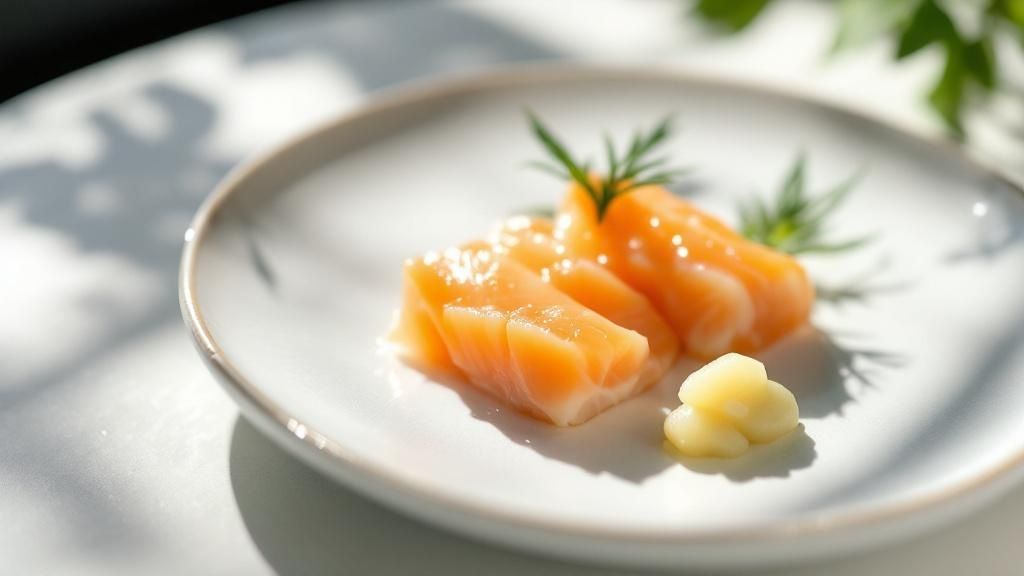
It’s completely normal to have a few questions when you’re just getting your feet wet. After all, diving into a new culinary world is an adventure, and addressing these common sticking points is the best way to build confidence as you explore Japanese cooking basics.
Common Beginner Hurdles
One of the first questions I often hear is about substitutions. A classic example: can you use Chinese dark soy sauce instead of Japanese shoyu? Well, you can, but it will definitely change the dish. Japanese shoyu tends to be more nuanced and delicately balanced, while its Chinese counterpart is often much saltier and more aggressive.
Another classic rookie mistake? Grainy miso soup. If this has happened to you, I can almost guarantee you boiled the miso paste. Boiling destroys its delicate, complex flavor and causes the soybean solids to curdle and separate. Not what you want.
To keep your miso soup silky smooth, always add the paste at the very end. Take the pot off the heat, mix the paste with a little warm broth to dissolve it, and then gently stir it back into the pot.
Finally, so many beginners ask about the easiest way to make dashi. While making it from scratch is rewarding, instant dashi granules (dashi-no-moto) are an absolute lifesaver for busy weeknights. They dissolve in hot water in seconds, giving you that foundational umami boost without the wait.
These simple techniques are rooted in the broader principles of a balanced, mindful diet. To see how it all connects, you can dive deeper into the real secrets behind the Japanese diet for weight loss and its beautiful focus on whole, fresh ingredients.
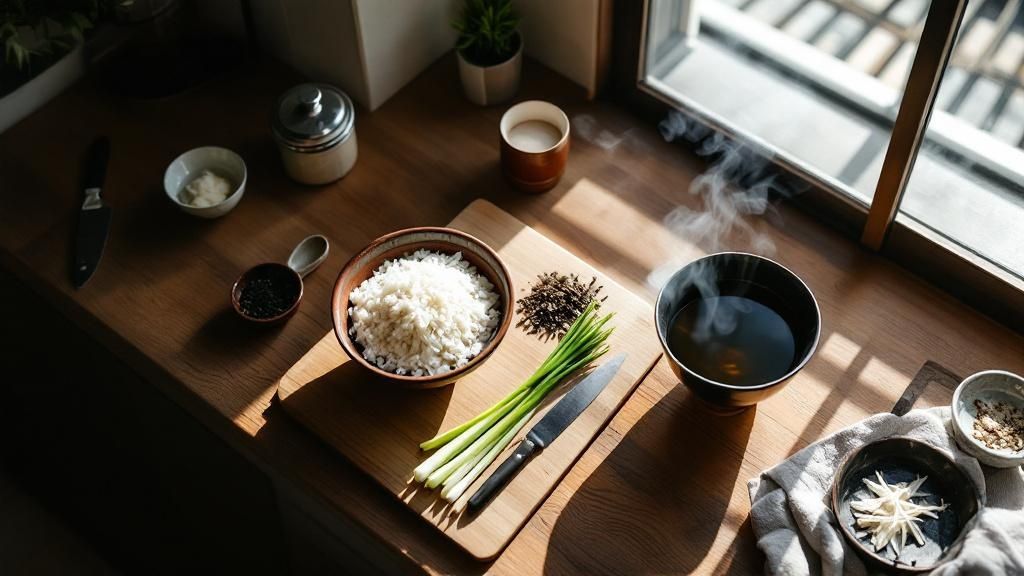

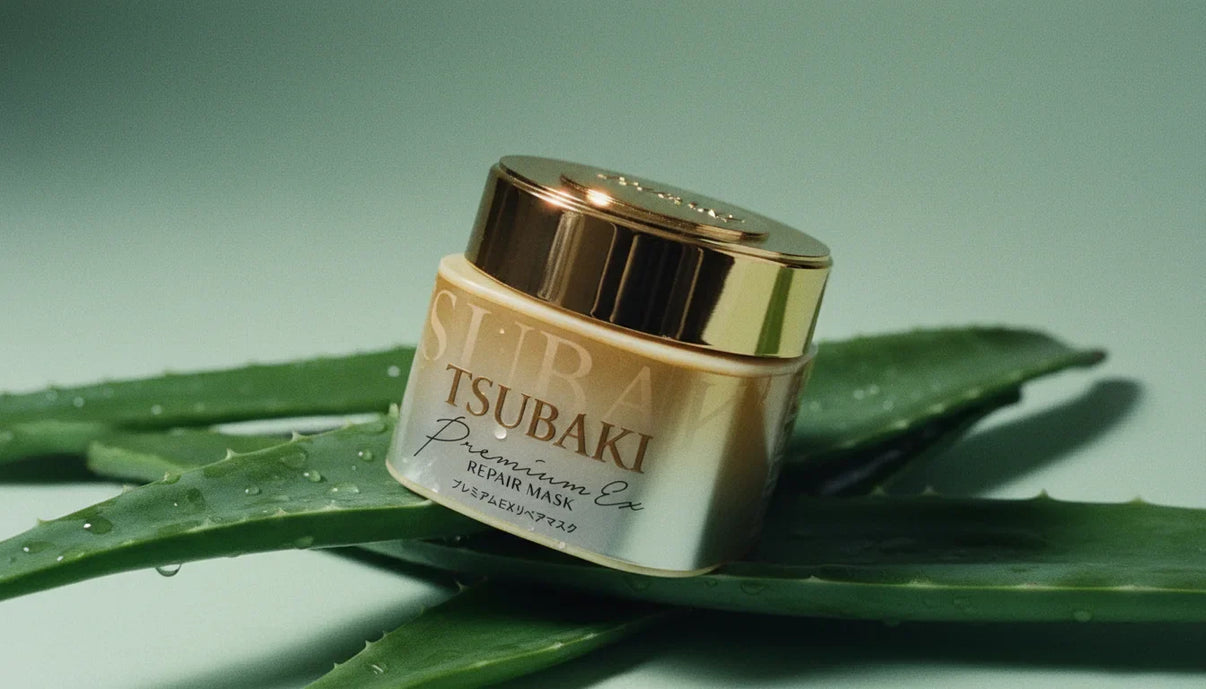

Share:
9 Popular Japanese Hairstyles to Try in 2025
How to Brew Japanese Green Tea: Easy Step-by-Step Guide